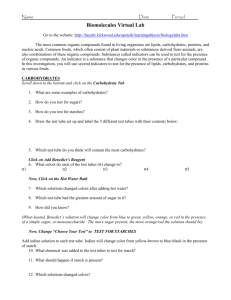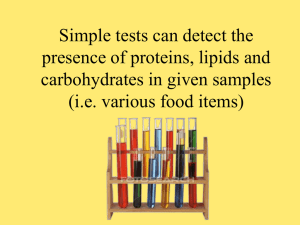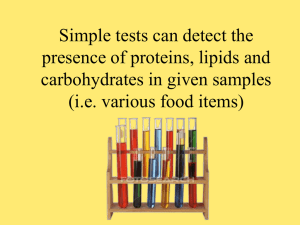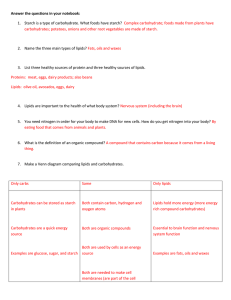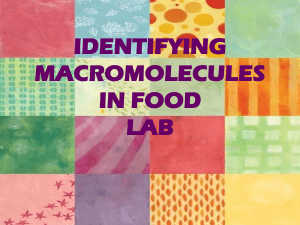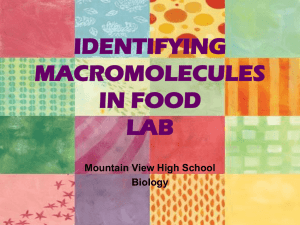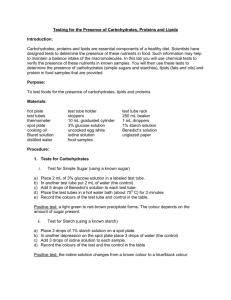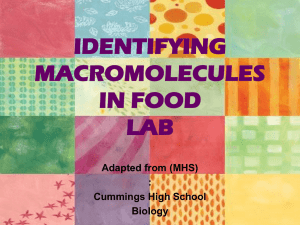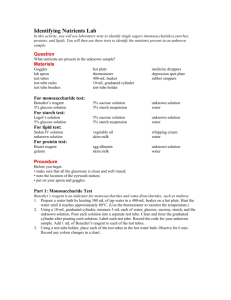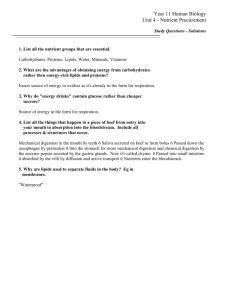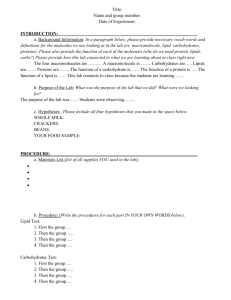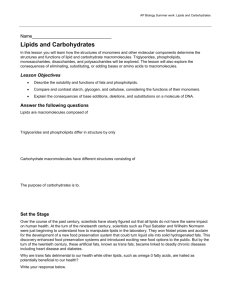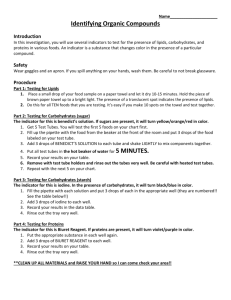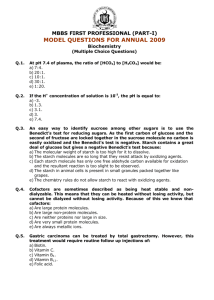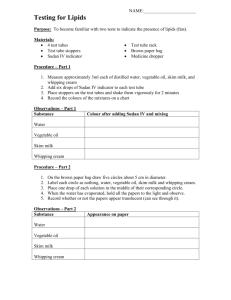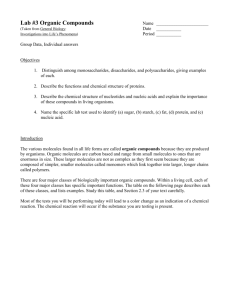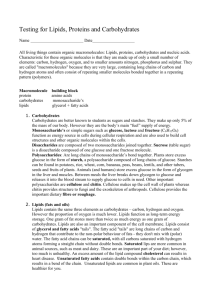Macromolecule Virtual Lab
advertisement
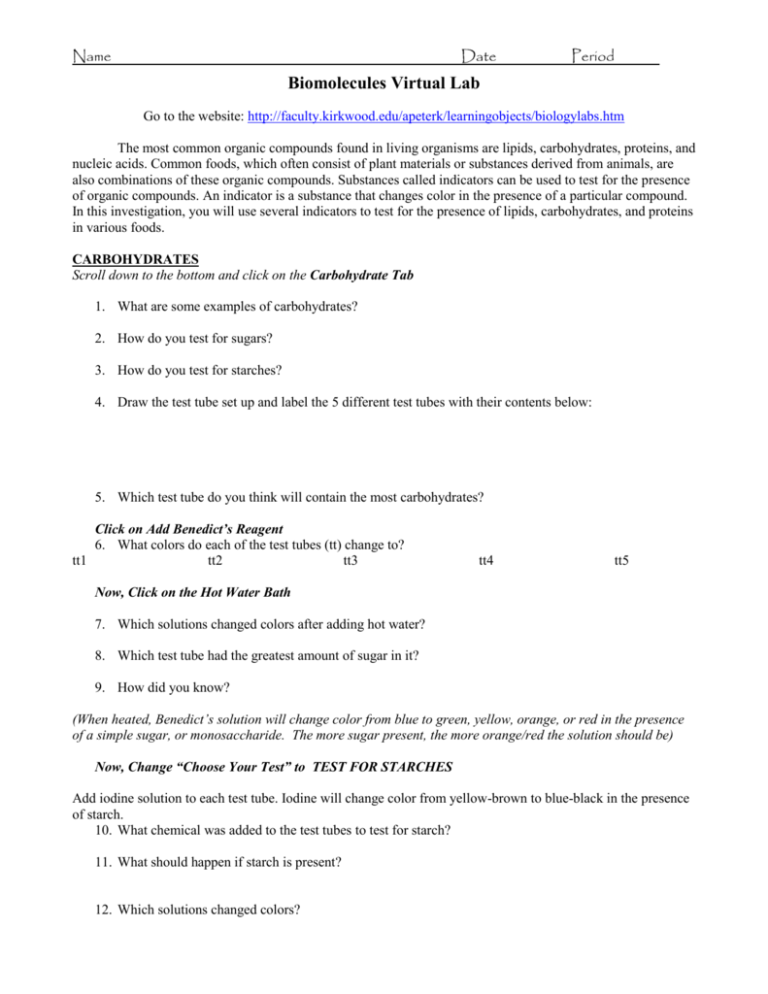
Name Date Period Biomolecules Virtual Lab Go to the website: http://faculty.kirkwood.edu/apeterk/learningobjects/biologylabs.htm The most common organic compounds found in living organisms are lipids, carbohydrates, proteins, and nucleic acids. Common foods, which often consist of plant materials or substances derived from animals, are also combinations of these organic compounds. Substances called indicators can be used to test for the presence of organic compounds. An indicator is a substance that changes color in the presence of a particular compound. In this investigation, you will use several indicators to test for the presence of lipids, carbohydrates, and proteins in various foods. CARBOHYDRATES Scroll down to the bottom and click on the Carbohydrate Tab 1. What are some examples of carbohydrates? 2. How do you test for sugars? 3. How do you test for starches? 4. Draw the test tube set up and label the 5 different test tubes with their contents below: 5. Which test tube do you think will contain the most carbohydrates? Click on Add Benedict’s Reagent 6. What colors do each of the test tubes (tt) change to? tt1 tt2 tt3 tt4 tt5 Now, Click on the Hot Water Bath 7. Which solutions changed colors after adding hot water? 8. Which test tube had the greatest amount of sugar in it? 9. How did you know? (When heated, Benedict’s solution will change color from blue to green, yellow, orange, or red in the presence of a simple sugar, or monosaccharide. The more sugar present, the more orange/red the solution should be) Now, Change “Choose Your Test” to TEST FOR STARCHES Add iodine solution to each test tube. Iodine will change color from yellow-brown to blue-black in the presence of starch. 10. What chemical was added to the test tubes to test for starch? 11. What should happen if starch is present? 12. Which solutions changed colors? Name Date Period LIPIDS Now, Click on main tab marked Lipids Sudan III stain will dissolve in lipids and stain them red or orange 13. What test is used for lipids? 14. How does it work? 15. What color do the solutions change if lipids are present? 16. Label the experimental samples you are given in the illustration below: Click on add Sudan III 17. Which samples changed colors? 18. Based on your experimental findings, which sample contained the most lipids? CONCLUSION: 19. When testing for the presence of __________________ you should use Benedict’s Reagent to the sample. In addition to adding this chemical reagent you should also place the sample into a ___________________________________. If testing for the presence of starches, you simply use drops of __________________ which has the elemental symbol of _______. It changes to a _________________ color if starch is present. 20. Sudan III is used when testing for the presence of _______________________. It actually ___________________ the lipids and will stain them to red or _______________.
